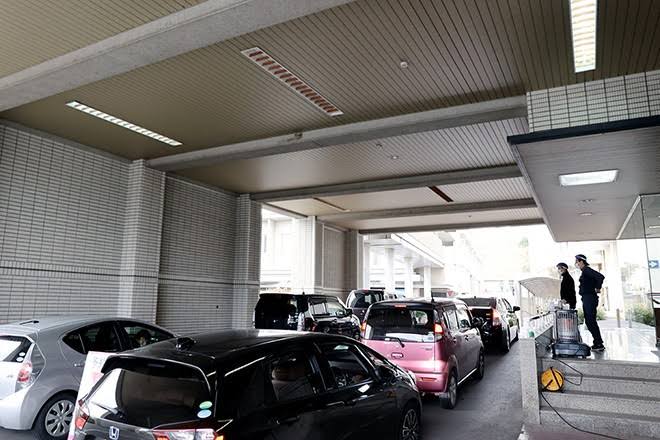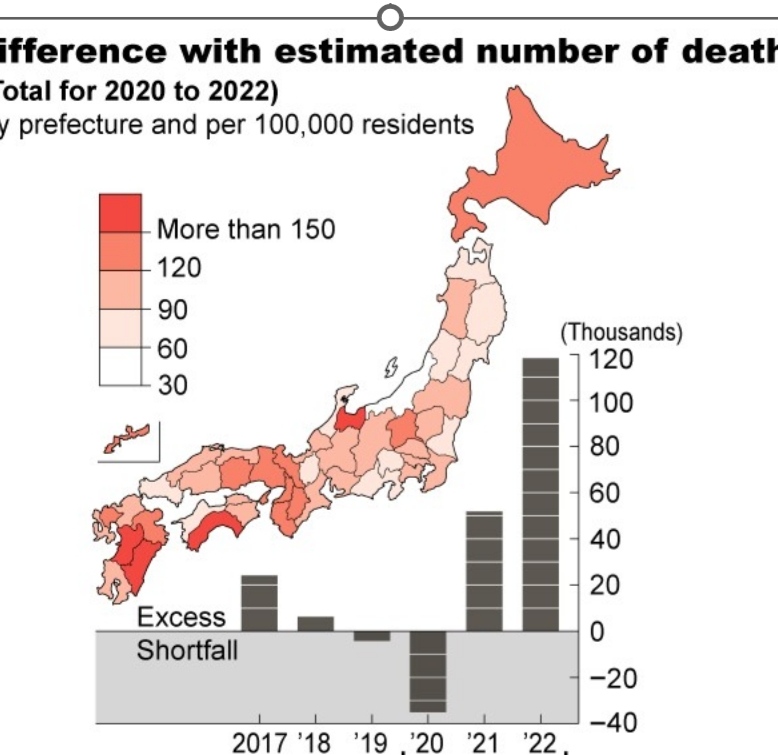COVID blamed for sudden rise in fatalities across Japan since 2020

The novel coronavirus pandemic offers the only plausible explanation for a spike in fatalities in Japan, especially in rural areas, since 2020.
The Asahi Shimbun set out to explain higher-than-projected death rates over the three-year period based on estimates of deaths by researchers working in conjunction with the health ministry.
Researchers regularly make estimates of this kind to gauge the effect of infectious illnesses, such as seasonal flu, as well as natural disasters on the population. The total number of recorded deaths over the past five years is used to estimate the number of deaths for a regular year.
The Asahi selected the median in the number of estimated deaths as the reference point to calculate the difference from the actual number of deaths in the three years from 2020. That led to 135,000 more deaths over that period than the estimates.
For 2020, there was a shortfall of about 35,000 deaths from the estimate, in part because COVID-19 had not yet spread widely, coupled with a wider use of face masks and a tendency to stay indoors, which led to plummeting numbers of flu epidemic patients.
However, there were about 52,000 more deaths than the estimate the following year, while in 2022 there was an excess of 118,000 deaths.
For the three-year period, the total number of deaths that prefectural governments said were caused by COVID-19 came to about 57,000.
But even if the number of individuals whose cause of death was COVID-19 was low, the novel coronavirus likely worsened the health of those with a pre-existing condition, contributing to a sharp increase in fatalities by other causes, such as respiratory or circulatory illnesses.
Some of the deaths for reasons other than COVID-19 may also have been because patients were unable to get immediate medical care because hospital beds were reserved for COVID-19 cases. That might have led to an increase in deaths from stroke and cardiac infarction that could have been prevented if immediate treatment was provided.
Many senior citizens who were recorded as dying of natural causes may have simply been weakened by the initial effects of COVID-19 and their subsequent bed-ridden condition.

The Asahi Shimbun
The study also found that while deaths linked to COVID-19 were greater at first in urban areas, the spread of the illness led to a higher number of deaths in rural areas in the last part of the three-year period.
The larger number of senior citizens in rural areas as well as the greater likelihood that local medical care facilities would quickly come under strain likely led to the increase in deaths.
For example, while the number of deaths per 100,000 residents was low in Kagawa and Saga prefectures in 2020 and 2021, the number surged in 2022.
For the three-year period, prefectures that had high fatality rates were Miyazaki, Kochi and Toyama.
“In addition to those who died after becoming infected with COVID-19, some people died after their pre-existing condition worsened due to COVID-19 infection,” said Masahiro Hashizume, a professor of epidemiology at the University of Tokyo who led the health ministry’s research team.
“COVID-19 had a major negative effect on the health of the public through the overlapping of various indirect factors due to the spread of infections,” Hashizume said.
(This article was written by Tokiko Tsuji, a senior staff writer, and Ryoma Komiyama.)
THE ASAHI SHIMBUN



